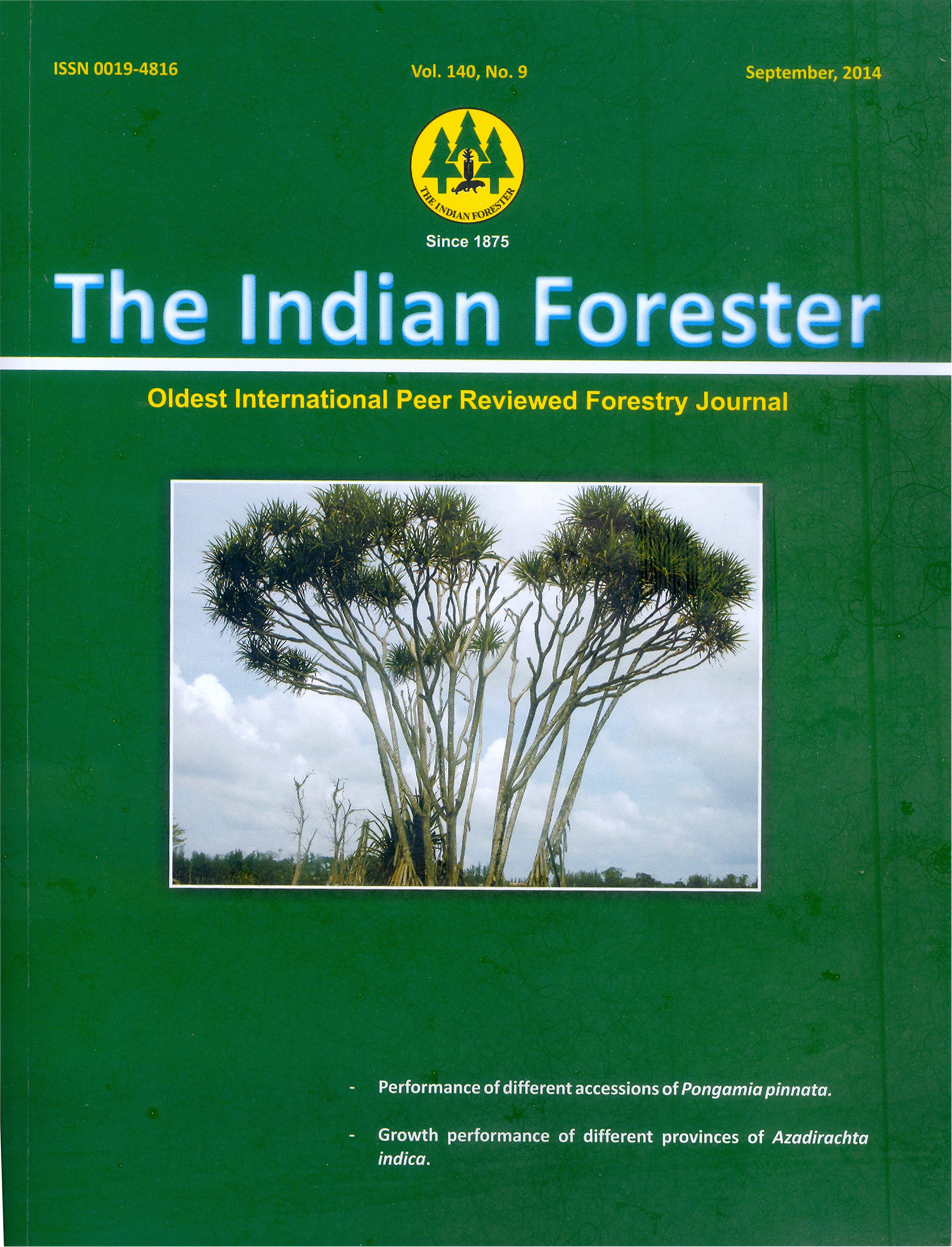Propagation and Medicinal Uses of Safed Musli ( Chlorophytum Borivilianum santapau and Fernades): A Review
DOI:
https://doi.org/10.36808/if/2014/v140i9/52364Keywords:
Safed Musli, Chlorophytum Borivilianum , Medicinal Plants, Alkaloids.Abstract
Chlorophytum borivilianum family Liliaceae a traditionally rare Indian medicinal herb used in the treatment of many clinical conditions is now threatened species worldwide due to over harvesting. The tubers are rich in alkaloids, vitamins, minerals, proteins, carbohydrates, steroids, saponins and polysaccharide, etc. found in tropical moist and dry deciduous forests. The decreasing supply from the natural resources and increasing demand in national and international markets requires prompt domestication and cultivation of medicinal plants, especially high value medicinal plants is creating new dimension in the field of agriculture. Hence, there is a strong need to understand the current scenario of its cultivation, description and its new medicinal propertiesReferences
Anonymous (1990-91). Annual Progress Report of Cess Fund Scheme (ICAR) on Development of Culture of Safed Musli (Chlorophytum borivilianum) for root yield and acceptable medicinal quality. Rajasthan College of Agriculture, Udaipur.
Bordia P.C., Joshi A. and Simlot M.M. (1995). Safed Musli. Advances in Horticulture, 11:429-451.
Chadha Y.R., Gupta R. and Nagarjan S. (1980). Scientific appraisal of some commercially important medicinal plants of India. Indian Drugs and Pharma Industries, 15(2):7
Dabur R., Gupta A., Mandal T.K., Singh D.D., Bajpai V., Gurav A.M. and Lavekar G.S. (2007). Antimicrobial activity of some Indian medicinal plants. African Journal of Traditional, Complementary, and Alternative Medicines. 16; 4(3):313-318
Deore S.L. and Khadabadi S.S. (2009). Screening of anti-stress properties of Chlorophytum borivilianum. Pharmacologyonline. 1:320-328
Deore S.L. and Khadabadi S.S. (2010). Isolation and characterization of phytoconstituents from Chlorophytum borivilianum. Pharmacognosy Res., 2(6):343-349.
Haque R., Saha S. and Bera T. (2011). Peer Reviewed Literature on medicinal activities of Chlorophytum borivilianum commercial medicinal plant. Int. J. Drug Dev & Res., 3(1):165-177.
Kenjale R.D., Shah R.K. and Sathaye S.S. (2007). Anti-stress and anti-oxidant effects of roots of Chlorophytum borivilianum (Santa Pau & Fernandes). Indian J Exp Biol., 45(11):974-979.
Kothari S.K. and Singh P. (2004). Production technique for the cultivation of safed musli (Chlorophytum borivilianum). J Horticulture Sci. Biotech., 78(2):261-264.
Mimaki Y., Kammoto T. and Sashida Y. (1996). Steroidal Saponins from the underground parts of Chlorophytum and their inhibitory activity on tumor promoter-induced phospholipids metabolism of Hela cells. Phytochemistry, 41:1405-10.
Misra B. (1979). Bhava Prakash Nighantu (Indian Materia Medica) commentary by KC Chunekar pp 391.
Narasimhan S., Govindarajan R., Madhavan V., Thakur M., Dixit V.K., Mehrotra S. and Madhusudanan K.P. (2006). Action of (2Ã 1) Fructooligopolysaccharide fraction of Chlorophytum borivilianum against Streptozotocin-Induced oxidative stress. Planta Med., 72(15):1421- 4.
Patel M.A., Patel D.H., Patel P.B. and Dalal K.C. (1991). Studies related to domestication and collection of Chlorophytum species. All India Coordinated Project on Medicinal and Aromatic Plants (ICAR) IX Workshop Report of Gujarat Agriculture University, Anand. 12-15 December. pp 76-80
Qiu S.X., Li X.C. and Xiong Y. (2000). Isolation and characterization of cytotoxic saponin Chloromaloside -A from Chlorophytum. Planta Med. 66:587-90.
Rochford T. and Grover R. (1961). The Rochford Book of House Plants. Adv. Horticul., 11:429-451.
Santapau H. and Fernandes R.R. (1955). A new species of Chlorophytum from Salsette Island. J. Bombay Nat. Hist., Soc., 52:897.
Seth P., Sharma M.K. and Simlot M.M. (1991). Saponins in Chlorophytum species. Paper presented in Diamond Jubilee Annual General Body meeting of Society of Biological Chemists of India and Bioteck. Institute of Chemical biology. Culcutta 27-30 December.
Sheriff A. and Chennaveeraiah M.S. (1972). Karyomorphology of four diploid species of Chlorophytum. Nucleus, 15(1):39-45
Singh D. (1974). Udwijj Aushadhravya (Unani Dravyagunadarsh in Hindi) pp587.
Singh D., Pokhriyal B., Joshi Y.M. and Kadam V. (2012). Phytopharmacological aspects of Chlorophytum borivilianum (safed musli): A review. International Journal of Research in Pharmacy and Chemistry, 2(3): 853-859.
Thakur G.S., Bag M., Sanodiya B.S., Debnath M., Zacharia A., Bhadauriya P., Prasad G.B. and Bisen P.S. (2009). Chlorophytum borivilianum: A white gold for biopharmaceuticals and neutraceuticals. Current Pharm. Biotechnol., 10(7):650-66.
Visavadiya N.P., Soni B., Dalwadi N. and Madamwar D. (2010). Chlorophytum borivilianum as potential terminator of free radicals in various in vitro oxidation systems. Drug Chem Toxicol., 33(2):173-82.
Yadava A.K. (2000). Cultivation practices of safed musli (Chlorophytum borivilianum) in open and under agroforestry systems. Advances in Plant Science Research, 12:31-38
Yadava A.K. and Pandey R. (2004). Chlorophytum borivilianum baker: A potent medicinal plant. Indian Forester, 130(3):340-42.
Downloads
Downloads
Published
How to Cite
Issue
Section
License
Unless otherwise stated, copyright or similar rights in all materials presented on the site, including graphical images, are owned by Indian Forester.





